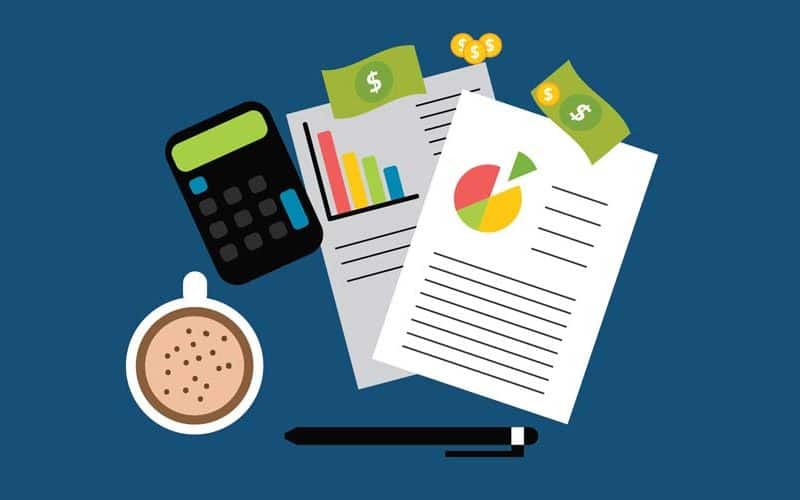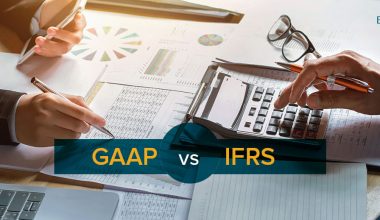The accounting cycle includes the process of accounts payable. In other words, to fully grasp the steps in the accounting cycle you need to first understand the accounts payable process.
As a small business owner, you’ll need to be aware of the accounts payable cycle and understand how the process works. Yea, some small businesses tend to overlook its importance but that does not make it any less relevant. It just means that they yet to see the bigger picture.
If you own a small business, you may be able to pay your expenses as soon as they arrive. On the other hand, if you have a lot of bills to pay, you’ll definitely need to put them to accounts payable and pay them later.
But then what exactly are accounts payables?
Well, our post on accounts payable already covers all you should know. But while this post will cover the accounts payable process and how to manage it, I’ll just scratch the surface.
What are Accounts Payable?
In simple terms, accounts payable are what you owe for products purchased on credit. Basically, the amount you owe for products and services goes to your accounts payable balance whenever you make a purchase.
And because all of these products and services were acquired on credit, with the balance due and payable within a set timeframe, a late fee or penalty is set, if the balance is not paid within the stipulated timeframe.
Furthermore, accounts payable is a liability account. In other words, any rise in this account is recorded as a credit, with a corresponding debit to an expense account in double-entry accounting.
When invoices are paid, the accounts payable account is debited and the cash account is credited.
What’s the difference between accounts payable and accounts receivable?
Accounts payable and receivable are both critical components of the accounting process. As previously stated, accounts payable are amounts owing to suppliers or service providers for goods received or services delivered. This makes them liabilities.
Accounts receivable (A/R) on the other hand, is money you’re owed for goods or services you offered on credit to your clients. Accounts receivable balances are considered an asset because they show how much money your customers owe you. Knowing this amount is useful when assessing your accounts receivable turnover to gain better business insights.
What are the Steps in the Accounts Payable Process?
In general, a strong chart of accounts, which allows you to post your expenses to the correct account, is the foundation of a thorough accounts payable process. When you send a check or an electronic payment to the vendor for the amount owing on or before the due date, the process is complete.
You should have no trouble adapting to the accounts payable process if you’re used to managing your own personal bills. There are a few things you must do, though, in order to correctly prepare and process accounts payable.
Step 1: Create your Chart of Accounts
One of the most crucial things you’ll need to accomplish to start the accounts payable process is to create a chart of accounts that works for your business. All of your accounting transactions, including accounts payable, are kept on your chart of accounts.
While most accounting software programs come with a default chart of accounts, you’ll need to create additional accounts to effectively track your accounts payable charges. You can also use spreadsheet software like Microsoft Excel to create your chart of accounts.
Step 2: Establish Vendor Information
If you’re just starting off, you’ll most likely need to set up your vendors. Whether you’re using spreadsheet software or accounting software to manage accounting transactions, you’ll need to keep track of vendor information.
If you’re using accounting software, you can enter vendor information straight into the program. This also includes the vendor’s accounting or payment terms. For the most part, these accounting terms refer to the amount of time you have to pay your bill to the vendor or supplier. Some popular terms include Net 10, Net 30, and Net 60.
For example, if your vendor sends you an invoice with Net 30 payment terms and the invoice is carries the date, December 15, you must make payment by January 14 at the very latest to avoid being labeled late.
Another typical payment period, especially among suppliers, is 2/10 Net 30. Using the same invoice date (December 15), this term means you can get a 2% reduction on the total amount due if you pay your invoice before December 24. If you do not pay by December 24, the invoice must not linger beyond January 14 at the latest.
Meanwhile, Due on Receipt is another frequent payment option. Basically, if a vendor or supplier sends you an invoice that says “Dueon Receipt,” it means payment is due right away.
Step 3: Examining and Entering Bill Details
Mostly, you or your accounting clerk would need to check an invoice for accuracy after receiving it from a vendor or supplier.
If a bill is for products ordered, double-check that all of the items specified on the invoice have arrived. On the other hand, if the invoice is for services supplied, double-check that the services were delivered as indicated. It’s critical to finish this step for all invoices you get.
After that, you can start entering invoice information in your ledger accounts or in your software application. Basically, you can approve bills as you review them; that’s if it’s a routine to enter all accounts payable for your company.
But if you decide to hire an accounting clerk, you’ll need to give him or her some general guidelines on invoice approval. This includes a dollar limit on what the clerk can approve.
Another option, however, is to have your clerk code invoices with the appropriate account numbers and then send them to you for approval. This method allows you to view incoming bills, ensuring accuracy and preventing payment errors.
After this step, your clerk can commence entering payment information. Some of these pieces of information include; the invoice number, due date, and the amount you owe.
Step 4: Review and process payment for any invoices due
Reviewing your accounts payable each week to determine what payments are due is the best approach. It helps to ensure that your vendors get their payments on time. Basically, you’ll need to evaluate due dates to see which bills you need to pay. This follows whether you’re using a manual accounting system or accounting software.
For invoice payments, on the other hand, you have a variety of options. You can write checks, process checks from your accounting software, pay your vendors and suppliers with a company credit card, or use an electronic payment mechanism.
But, mind you, If you use a check to pay your vendors, you should always put a copy of the invoice in the envelope with the check. You’ll also want to double-check that any form of remittance includes the invoice number. This is to ensure that your payment is properly recorded.
On the flip side, if you pay using a credit card or any form of transfer, you must notify the vendor.
Step 5: Repeat the Procedure Once a Week
You may lessen your effort at the end of the month while also preventing late payments and late fees by creating and executing a weekly accounts payable cycle. Processing invoices on a regular basis can help with cash flow, even if you only have a few vendor payments to make.
How Can you Effectively Manage your Accounts Payable Process?
Paying bills is a necessary aspect of any business, regardless of its size. And as you know, income invoices are managed by an Accounts Payable department, which also helps to process payments.
But more importantly, implementing business and finance policies to streamline an accounts payable process can help a company prepare for future expansion while also streamlining the accounts payable process steps.
Here are five tips to assist you in managing your payables:
#1. Simplify your Accounts Payable Process Steps: Invoice Overload
You can streamline the steps in your accounts payable process by reducing the number of check runs to twice a month. And by check runs, I mean the process of printing checks to pay invoices and putting them in the General Ledger.
Furthermore, invoices should be backed up in the records and approved by appropriate department heads before a check run so that payments may be made on time.
Also, ceilings for each check run should be known by the accounts payable department. This will ensure that the most important bills are paid.
A department with the authority to make confident business and payment decisions will make the process easier by making judgments such as making partial payments on larger balances or deferring payments to vendors with a higher tolerance for due dates.
#2. Safety Procedures: Reduce Accounts Payable Fraud
Accounts Payable is a high-risk area for business fraud. A good example is when a dishonest employee sets up a “dummy vendor,” fraud is common. Basically, when a business pays invoices for services that have never been given, they are essentially paying the dishonest employee and losing money.
However, procedures and rules can help you protect your company and reduce risk. So, establish a method to ensure that the individual performing the checks does not also have the capacity to create new vendor accounts. Also, before creating a vendor account, it should be explained to the owners and the account should be reviewed.
Meanwhile, other methods that help to reduce fraud include;
- Department heads’ permission
- Separation of roles, and
- Spot checks
#3. Confirm Due Dates: Vendor terms may be Negotiable
In most cases, invoices will specify a payment deadline of 30 or 60 days. A business can negotiate conditions for outstanding invoices regardless of the terms provided. Basically, a vendor would often give discounts or special terms if a company buys significant quantities on a regular basis.
So, if a firm is going to be late with a payment, it is ideal if they call the vendor to keep the relationship going and see if there is anything that can be done about the late payment.
#4. Reduce CFO Impact to Verification & Signature
A Chief Financial Officer (CFO) usually signs the check but does not put the check run together. So, before sending bills to the CFO to be paid, the Accounts Payable department should run the aging, choose which invoices to pay, assemble the invoices, print checks, and verify that all invoices are approved.
On the other hand, before signing, the CFO simply compares the invoice amounts to the check amount. If a corporation controls cash more actively, let Accounts Payable know ahead of time what their check run budget is so they can determine which vendors can wait until the next check run and bill signing.
#5. Use Software to Easily Complete Payments and Processes
Accounting software can help you examine your accounts payable more easily and prevent errors like inaccurate amounts, incorrect check numbers used to pay vendors, and paying too early or too late by allowing you to file, manage, and review paid and unpaid invoices. So all you need do is to enter payment terms for each vendor, such as Net 30 or Net 60, that the system can use as a default.
Also, accounting software can make it easy for your organization to conduct aging reports, giving you a better understanding of what’s in the pipeline.
What Are the 4 Functions of Accounts Payable?
Calculating, entering business transactions, processing invoices, and checking financial data to keep records.
What Is AP Full Cycle?
One area that businesses can try to improve is the full-cycle accounts payable process. “Full cycle” doesn’t just mean making orders and paying for them. It also means all the steps in between. This includes making documents, coding them, comparing them, and more.
What Is the 3 Way Match Process in Accounts Payable?
Before an invoice is paid, a process called “three-way matching” makes sure that the information on a purchase order, the supplier’s invoice, and the delivery receipt all match. Only the details of the supplier’s invoice and the details of the purchase order are compared in a two-way match.
What Are the Two Types of Accounts Payable?
Accounts payable for a business can be divided into two types salaries and expenses. Accounts payable usually come in the form of supplier invoices, but they can also be bills, invoices, or checks.
What Is the Difference Between P2P and AP?
The accounts payable procedure is merely one component of P2P. (procure-to-pay). P2P encompasses the entire procurement and billing cycle, including vendor payments. AP automation speeds these processes and ensures a greater level of accuracy at each workflow stage.
- ACCOUNTS PAYABLE GUIDE SIMPLIFIED! (+ Detailed formula breakdown)
- Accounts Payable vs Accounts Receivable Detailed Comparison
- Automating Accounts Payable Process: What You Should Know Before Automation
- ACCOUNTING INVOICE: Definition, How to Record It, and Free Softwares
- WHAT IS CASH CONVERSION CYCLE: How to Boost and Calculate CCC






